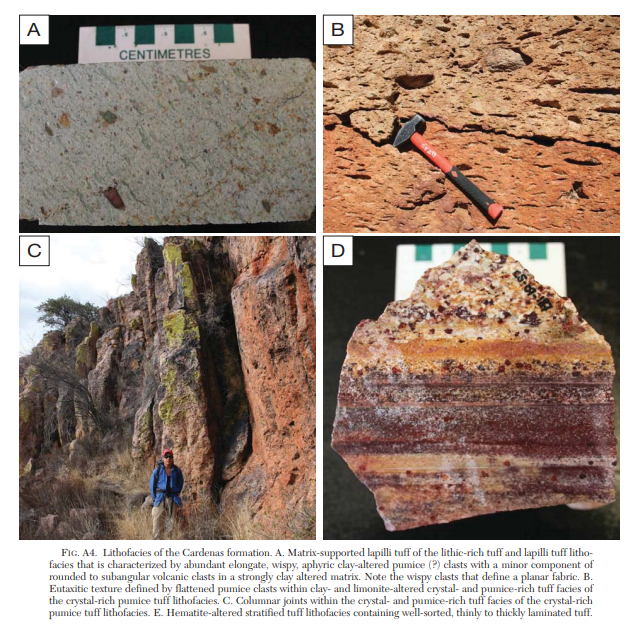Mon
26 Apr 2010The La Pitarrilla Silver-Zinc-Lead Deposit, Sierra Madre Occidental, Mexico: A Description of the Mineralization and a Reconstruction of Its Volcano-Sedimentary Environment
Authors: Claire M. J. Somers1, Harold L. Gibson1, Daniel J. Kontak1, and Ron Burk2
1Mineral Exploration Research Centre, Department of Earth Sciences, Laurentian University, 935 Ramsey Lake Road, Sudbury, Ontario, Canada P3E2C6
2Silver Standard Resources Inc., 999 West Hastings Street, Suite 1400, Vancouver, British Columbia, Canada V6C2W2
Abstract
The La Pitarrilla Ag-Zn-Pb deposit, Mexico, is hosted by Cretaceous, Eocene, and Oligocene strata that record a complex volcano-sedimentary, structural, and hydrothermal history. Deformed Cretaceous rocks form the basement to unconformably overlying Eocene and Oligocene volcanic strata. The Eocene volcaniclastic strata were derived from arc volcanism and from the erosion of subaerial arc volcanoes, with the clastic material transported by sedimentary gravity flows and deposited into a below storm wave base basin that developed within a back-arc extensional setting. Uplift of the arc during the Eocene was accompanied by extension and voluminous silicic pyroclastic volcanism, which is manifested by ignimbrite and pyroclastic surge deposits dated at 49.8 ± 1.0 Ma. Erosion during the Eocene and early Oligocene was accompanied or followed by northeastand north-northwest−trending faulting, the emplacement of rhyolitic and andesitic sills and dikes, and a 31.59 ± 0.52 Ma rhyolitic dome.
The La Pitarrilla Ag-Zn-Pb deposit is characterized by iron oxide- and sulfide-associated mineralization, which defines a vertically stacked mineralized system centered on rhyolitic dikes and sills that constitute the feeder system for an early Oligocene volcanic center manifest by a rhyolitic dome. The sulfide-associated mineralization is rooted in the basement Cretaceous sedimentary strata and is represented by an areally restricted but vertically extensive zone of disseminated and vein-hosted Ag-Zn-Pb (-Cu-As-Sb) sulfide mineralization and strata-bound replacement mineralization within conglomerates that occur at the Cretaceous-Eocene unconformity. The sulfide mineralization extends upward into the overlying Eocene and Oligocene volcaniclastic strata and rhyolitic sills, where it abruptly grades into a laterally more extensive, supergene zone of disseminated iron oxide-associated mineralization that replaced the sulfides. The main Ag-Zn-Pb mineralization event is interpreted to have occurred during or after emplacement of the early Oligocene rhyolitic dome.





